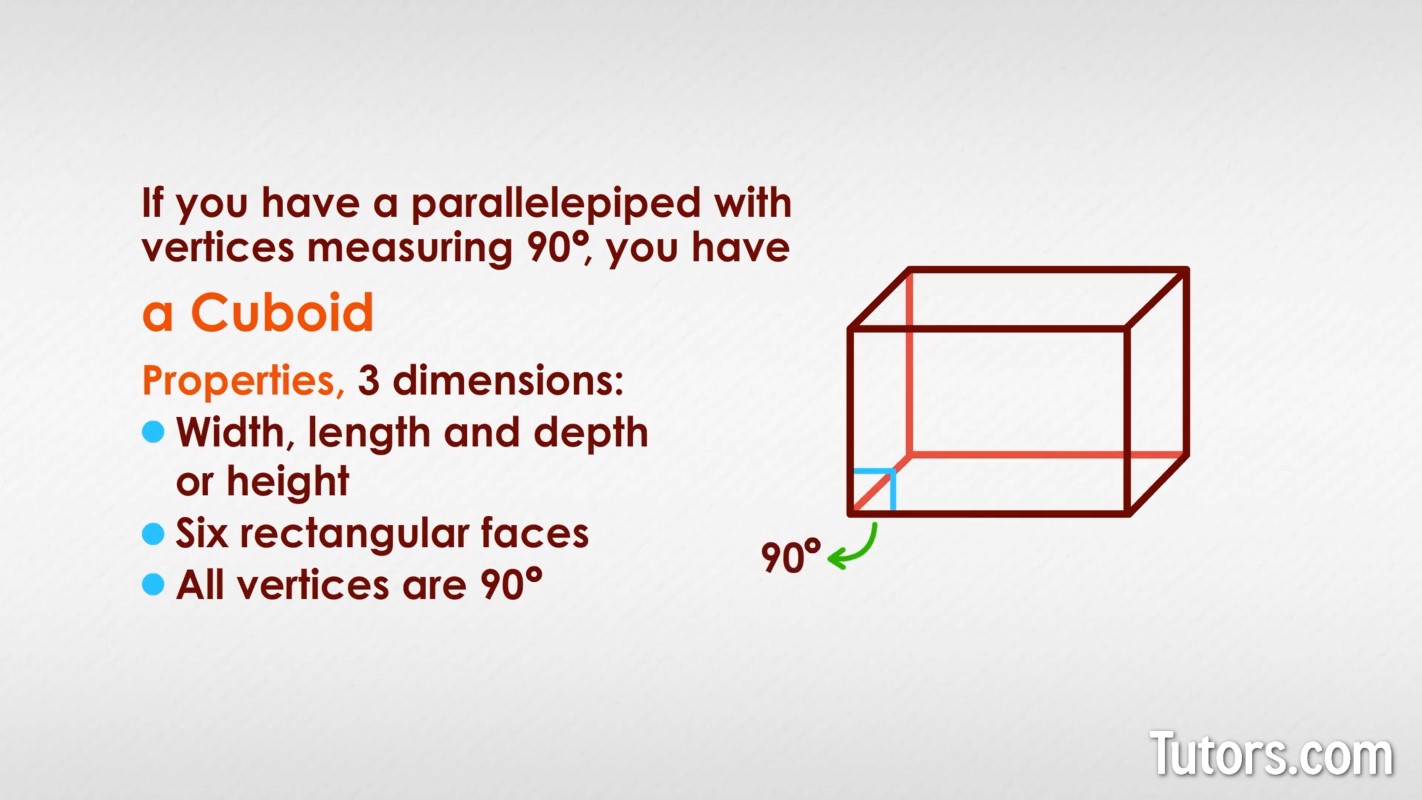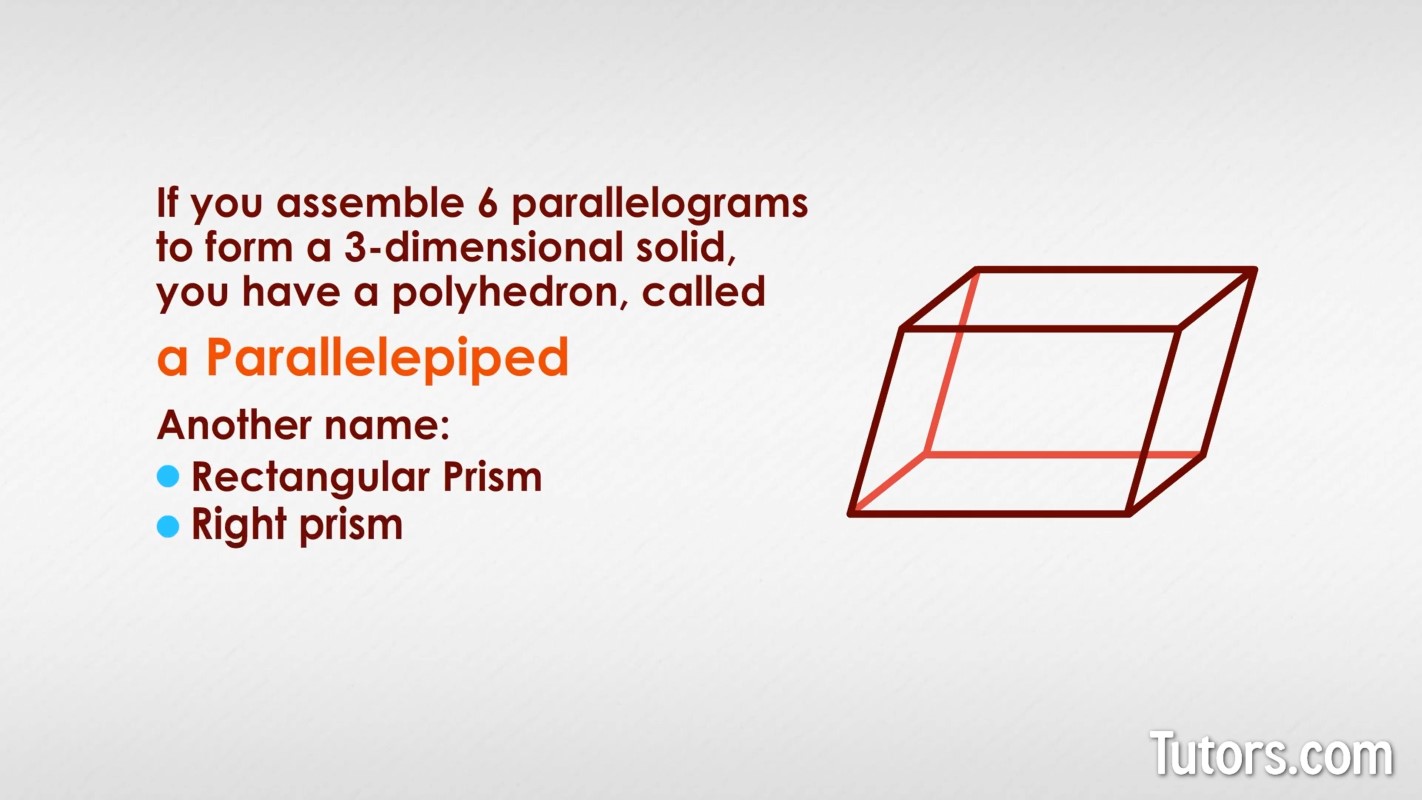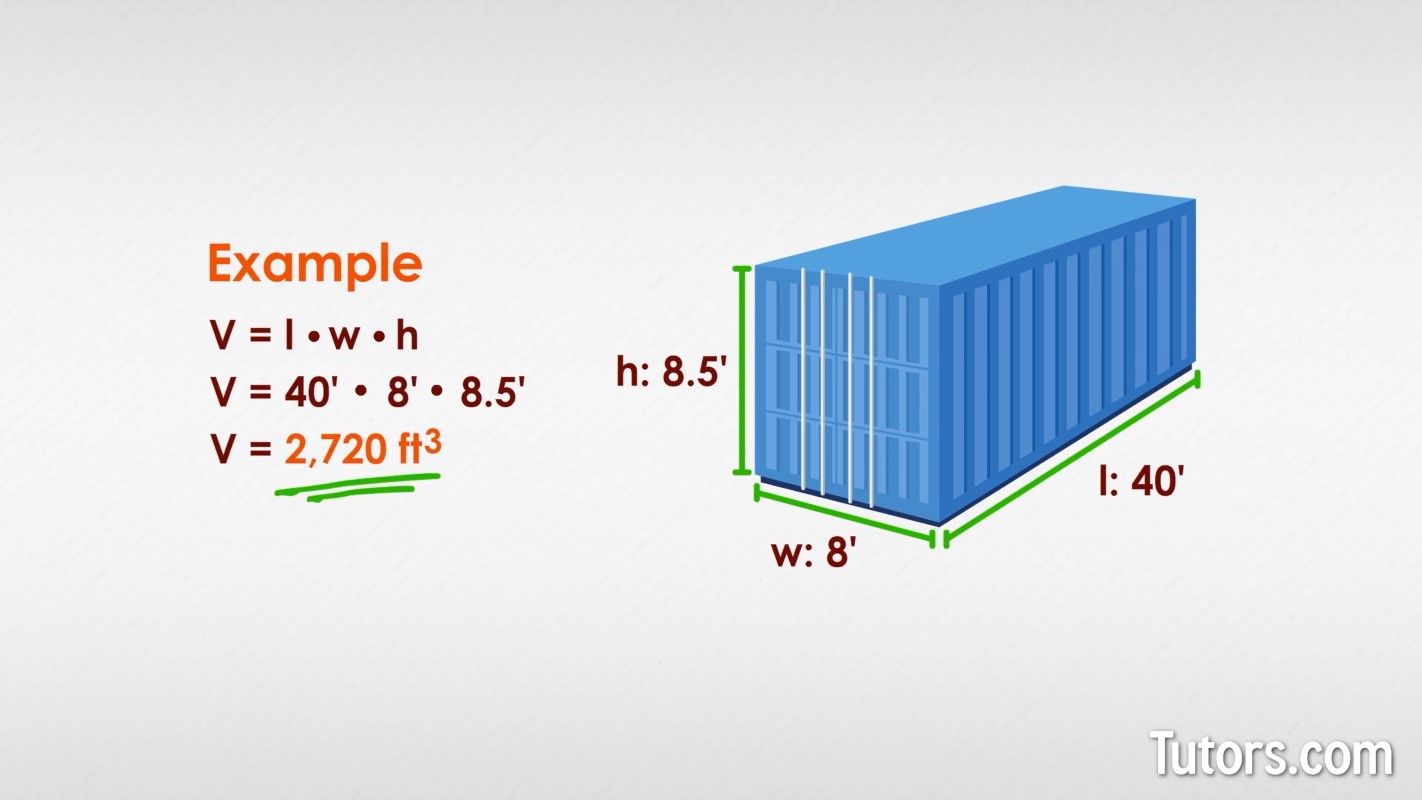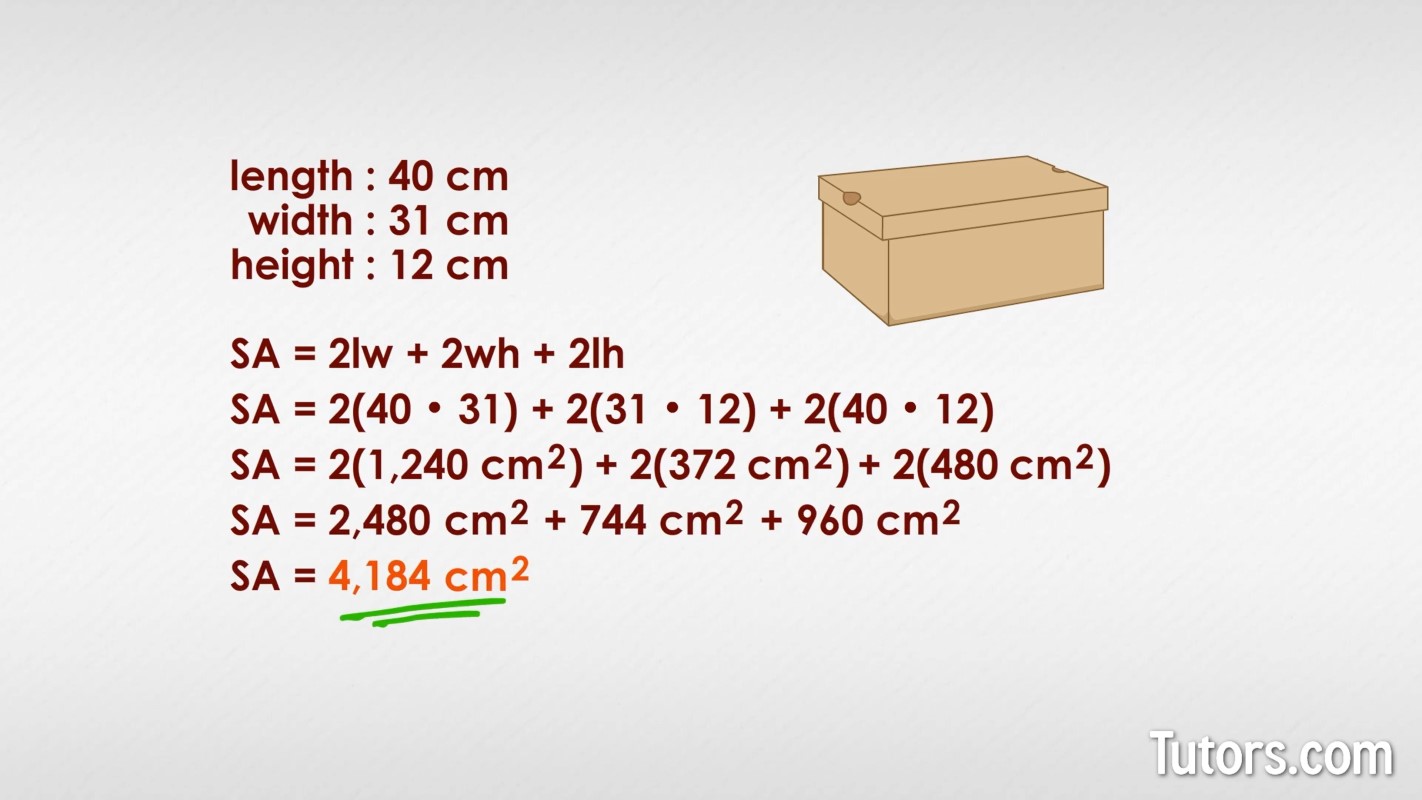What is a Cuboid? — Definition, Shape, Area & Properties
What is a cuboid?
A cuboid is not a cube. A cube can be a cuboid, but so can a rectangular prism. A cuboid is a special case of a parallelepiped, a three-dimensional solid with six parallelogram-shaped faces. If you have a parallelepiped with vertices measuring 90°, you have a cuboid.
A shoebox is a cuboid. A pair of dice, building bricks, and hardbound textbooks are all cuboids. Books, cardboard cartons, and Klondike® ice cream bars are cuboids. If the 3D object has six parallelograms all meeting at right angles, it is a cuboid.

Parallelograms & parallelepipeds
A parallelogram is a polygon with two pairs of parallel sides. So, rectangles and squares are parallelograms.
If you assemble six parallelograms to form a three-dimensional solid, you have a polyhedron called a parallelepiped:

Another name for this three-dimensional shape is a rectangular prism or right prism.
Properties of cuboids
All cuboids have these properties:
Three dimensions of width, length and depth (or height)
Six rectangular faces
All vertices are 90°
These three properties mean opposite sides of the cuboid are parallel and congruent to each other.
These conditions result in a box shape, like a shoebox, cereal box, or a textbook.
Calculating volume of cuboids
To find the volume of any cuboid, the formula is:
V = length x width x height (or depth)
Because the object is three-dimensional, volume is expressed as a cube - the third power - of whatever linear unit you used: cubic meters, cubic feet, cubic yards, and so on.
Try it!
Here is a shipping container, the kind you see stacked like children's blocks on cargo ships:

The outside dimensions are 8' wide, 8.5' high, and 40' long. What is the volume of the container?
Surface area of cuboids
To calculate the surface area of any cuboid, you need to know the surface area of each face. You then add all six areas together.
Because opposite faces are congruent, you only need three faces, which you can multiply times two and then add together. You are using each dimension (width, length, and height or depth) two and only two times in the formula.
The formula is:
Surface area is always measured in square units of the linear measurement, the second power.
Here is a box for cowboy boots:

The box measures 40 cm long, 31 cm wide and 12 cm high. You have to wrap these boots for a present. You need gift wrap. What is the total surface area of the box, in square centimeters, so you buy enough gift wrap?
Example problems
The decorative storage box you use to hold all your Mathematics competition trophies and ribbons measures 12" long x 8.5" wide x 6" tall on the inside. You want to line the inside with contact paper for protection. How many square inches of contact paper will you need?
Your Math Club is sending rescued mathematics textbooks to needy schools in Africa. Calculate the interior volume of a half-length shipping container with these interior dimensions:
Length: 5.89 m
Width: 2.35 m
Height: 2.36 m
A cuboid is a rectangular prism, a parallelepiped with 90° vertices (corners). Cuboids are everywhere: bricks, buildings, ice cream sandwiches, textbooks, shoeboxes, game dice, shipping containers, cereal boxes, and in many other corners of your world. You can easily calculate both the surface area and volume of any cuboid, if you know its width, length and height (or depth).